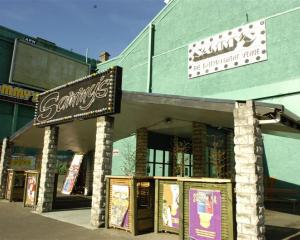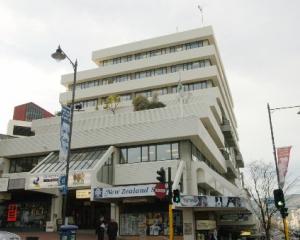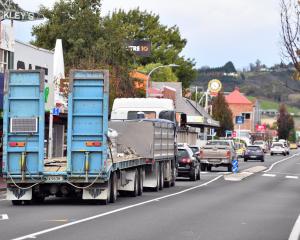The Dunedin City Council released the preliminary test results yesterday, which confirmed the edge of an old landfill buried in the area had been exposed in sand dunes at Middle beach, on the seaward site of Kettle Park.
The beach and playing fields were still believed to be safe to use, but traces of "a whole list" of chemicals had been found in the dunes, council community and recreation services manager Mick Reece said.
The contaminated zone stretched along the coastal dunes either side of Moana Rua Rd, although the exact level of chemical contamination was not yet known.

More extensive tests were planned to determine the extent of the problem, beginning in several weeks - once Otago Regional Council consents were obtained - and with results due by the end of the year.
In the meantime, signs were installed yesterday to warn members of the public to stay away from the dunes.
The details were confirmed at a media briefing attended by three council managers yesterday, two months after the council announced plans to probe the edges of the old landfill - dating back to the early 1900s - buried in the area.
The landfill had been capped in the 1940s and largely forgotten. However, the council was reminded of its existence after severe coastal erosion in 1997, which prompted several reports and detailed planning.
In September, a council progress report warned the dump contained "significant quantities" of trade waste and household and garden rubbish, but the exact nature and location of the material was not known.
At the time, council business development team leader Greg Sligo, a member of the council's Ocean Beach project team, told the ODT any risk the site could be exposed by erosion was believed to be "minuscule".
That was because the site was protected by a clay cap on top, and a 40m buffer zone was believed to lie between the landfill's edge and the sea.
Yesterday, Mr Sligo said the reason the landfill had been exposed remained "a good question".
Staff were not yet sure whether it was from coastal erosion, or from compression gradually causing the material underground to move, he said.
The contamination discovered so far included traces of fibre cement found in the dunes, "and that is known to contain asbestos", he said.
"We are urging caution. There is other material there that we will need to check."
Council community life general manager Graeme Hall said it was not clear how long the contamination had been exposed in the dunes, but no obvious health problems had been reported and expert advice was the beach, as well as nearby St Clair and St Kilda, remained safe.
The council was taking a "cautious, prudent approach" in warning the public of the risk, but fencing the area was not yet needed, he said.
Options to repair the site would only be considered once the extent of the problem was known, and would require consideration by city councillors, Mr Sligo said.
However, that could include building a new sea wall in the Middle beach area, or removing the industrial waste "which would be a hell of a job".
"I supposed anything is possible, at a cost."












